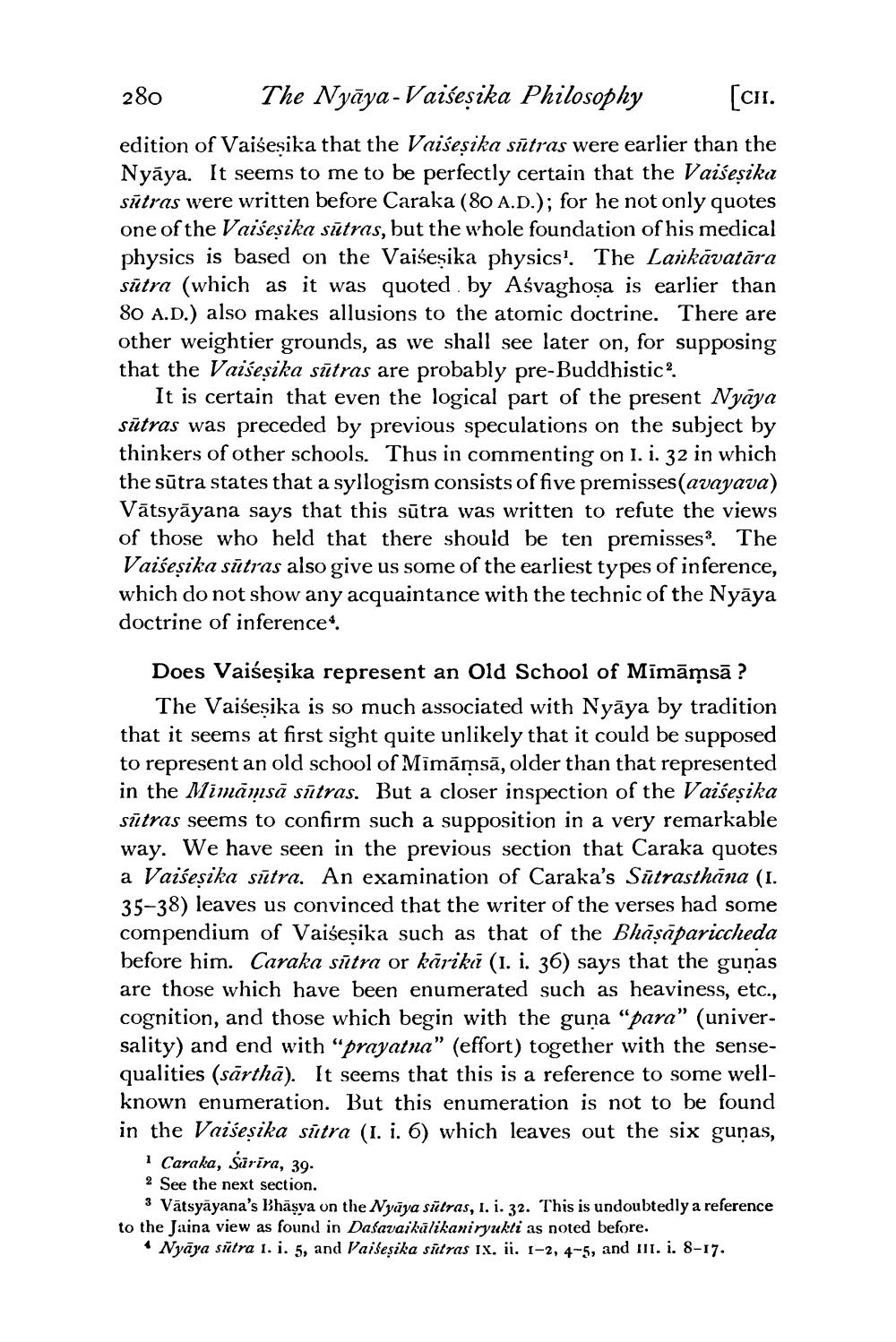________________
280
The Nyāya-Vaiseșika Philosophy
[ch.
edition of Vaisesika that the Vaisesika sūtras were earlier than the Nyāya. It seems to me to be perfectly certain that the Vaiseșika sutras were written before Caraka (80 A.D.); for he not only quotes one of the Vaišesika sūtras, but the whole foundation of his medical physics is based on the Vaišesika physics! The Laikāvatāra sūtra (which as it was quoted by Aśvaghosa is earlier than 80 A.D.) also makes allusions to the atomic doctrine. There are other weightier grounds, as we shall see later on, for supposing that the Vaiseșika sūtras are probably pre-Buddhistic?
It is certain that even the logical part of the present Nyāya sūtras was preceded by previous speculations on the subject by thinkers of other schools. Thus in commenting on 1. i. 32 in which the sūtra states that a syllogism consists of five premisses(avayava) Vātsyāyana says that this sūtra was written to refute the views of those who held that there should be ten premisses? The Vaiseșika sūtras also give us some of the earliest types of inference, which do not show any acquaintance with the technic of the Nyāya doctrine of inference'.
Does Vaiseșika represent an Old School of Mīmāmsā ?
The Vaišeșika is so much associated with Nyāya by tradition that it seems at first sight quite unlikely that it could be supposed to represent an old school of Mimāmsā, older than that represented in the Mimāmsā sūtras. But a closer inspection of the Vaisesika sūtras seems to confirm such a supposition in a very remarkable way. We have seen in the previous section that Caraka quotes a Vaiseșika sitra. An examination of Caraka's Sūtrasthāna (I. 35-38) leaves us convinced that the writer of the verses had some compendium of Vaiśesika such as that of the Bhāsāpariccheda before him. Caraka sūtra or kārika (1. i. 36) says that the gunas are those which have been enumerated such as heaviness, etc., cognition, and those which begin with the guna "para" (universality) and end with "prayatna" (effort) together with the sensequalities (sārthā). It seems that this is a reference to some wellknown enumeration. But this enumeration is not to be found in the Vaiseșika sitra (1. i. 6) which leaves out the six guņas,
1 Caraka, Särira, 39. 2 See the next section.
3 Vatsyāyana's Bhāṣva on the Nyāya sūtras, 1. i. 32. This is undoubtedly a reference to the Jaina view as found in Daśava kālikaniryukti as noted before.
• Nyāya sūtra 1. i. 5, and Vaibesika sätras ix. ii. 1-2, 4-5, and ill. i. 8-17.




